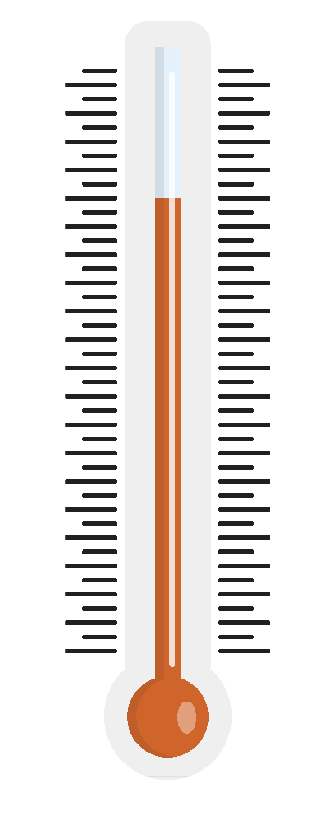
Under OSHA law, employers are responsible for providing workplaces free of known safety hazards. This includes protecting workers from extreme heat. Every year, dozens of workers die and thousands more become ill while working in extreme heat or humid conditions.
There are a range of heat illnesses and they can affect anyone, regardless of age or physical condition. Most heat-related health problems can be prevented, or the risk of developing them can be reduced.
ENGINEERING CONTROLS
The best way to prevent heat-related illness is to make the work environment cooler. A variety of engineering controls can reduce indoor workers' exposure to heat:
- Air conditioning (such as air-conditioned crane or construction equipment cabs, air conditioning in break rooms).
- Increased general ventilation.
- Cooling fans.
- Local exhaust ventilation at points of high heat production or moisture (such as exhaust hoods in laundry rooms).
- Reflective shields to redirect radiant heat.
- Insulation of hot surfaces (such as furnace walls).
- Elimination of steam leaks.
WORK PRACTICES
- Employers should have an emergency plan in place that specifies what to do if a worker has signs of heat-related illness, and ensures that medical services are available if needed.
- Employers should take steps that help workers become acclimatized (gradually build up exposure to heat), especially workers who are new to working in the heat or have been away from work for a week or more. Gradually increase workloads and allow more frequent breaks during the first week of work.
- Workers must have adequate safe drinking water close to the work area, and should drink small amounts frequently.
- Rather than being exposed to heat for extended periods of time, workers should, wherever possible, be permitted to distribute the workload evenly over the day and incorporate work/rest cycles.
- If possible, physical demands should be reduced during hot weather, or heavier work scheduled for cooler times of the day.
- Rotating job functions among workers can help minimize overexertion and heat exposure.
- Workers should watch each other for symptoms of heat-related illness and administer appropriate first aid to anyone who is developing a heat-related illness.
- In some situations, employers may need to conduct physiological monitoring of workers.
PERSONAL PROTECTIVE EQUIPMENT
Workers should be aware that use of certain personal protective equipment (e.g., certain types of respirators and impermeable clothing) can increase the risk of heat-related illness.
In some situations, special cooling devices can protect workers in hot environments:
- In some workplaces, insulated gloves, insulated suits, reflective clothing, or infrared reflecting face shields may be needed.
- Thermally conditioned clothing might be used for extremely hot conditions; for example:
- A garment with a self-contained air conditioner in a backpack.
- A garment with a compressed air source that feeds cool air through a vortex tube.
- A plastic jacket whose pockets can be filled with dry ice or containers of ice.
TRAINING
Workers and supervisors should be trained about the hazards of heat exposure and their prevention. Topics should include:
- Risk factors for heat-related illness.
- Different types of heat-related illness, including how to recognize common signs and symptoms.
- Heat-related illness prevention procedures.
- Importance of drinking small quantities of water often.
- Importance of acclimatization, how it is developed, and how your worksite procedures address it.
- Importance of immediately reporting signs or symptoms of heat-related illness to the supervisor.
- Procedures for responding to possible heat-related illness.
- Procedures to follow when contacting emergency medical services.
- Procedures to ensure that clear and precise directions to the work site will be provided to emergency medical services.
Source: OSHA.gov
Identifying key heat-related symptoms
Heat stroke: This is the most serious form of heat-related illness and happens when the body cannot regulate its core temperature. Sweating stops and the body can no longer rid itself of excess heat. Signs include confusion, loss of consciousness and seizures. If you are experiencing heat stroke symptoms, call 911 immediately, as this is a medical emergency that may result in death.
Heat exhaustion: Heat exhaustion is the body’s response to loss of water and salt from heavy sweating. Signs include headache, nausea, dizziness, weakness, irritability, thirst and heavy sweating.
Heat cramps: Heat cramps are caused by the loss of body salts and fluid during sweating. The low salt levels in muscles cause painful cramps. Tired muscles that are used for performing work are oftentimes the ones most affected by cramps. Cramps may occur during or after working hours.
Heat rash: Also known as prickly heat, heat rash is skin irritation caused by sweat that does not evaporate from the skin. Heat rash is the most common problem in hot work environments.
If you believe that you are experiencing any of these symptoms from heat exposure, pull over and call 911. Use a wet cloth, cold water or an ice pack to aid in lowering your body temperature in the interim.